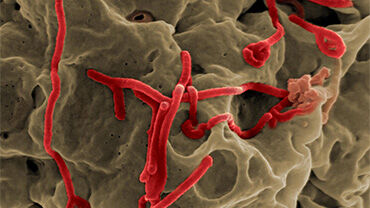Rapid risk assessment: Ebola virus disease outbreak in North Kivu and Ituri Provinces, Democratic Republic of the Congo - sixth update
This is the sixth update of a rapid risk assessment originally produced on 9 August 2018. The update addresses the impact of active chains of Ebola virus disease (EVD) transmission reported outside the outbreak’s epicentre, specifically in Goma, a provincial capital in the Democratic Republic of the Congo (DRC). Goma has an airport serving international flights to several African countries, including the Republic of the Congo, Ethiopia, Uganda and Zambia, which increases the risk that EU/EEA citizens living and travelling in the DRC get infected and eventually introduce the disease to the EU/EEA.
Executive Summary
As of 3 August 2019, WHO and the Ministry of Health of the DRC have reported 2 753 EVD cases, including 2 659 confirmed and 94 probable cases. This epidemic in North Kivu and Ituri Provinces is the largest ever recorded in the DRC and the second largest worldwide. A total of 1 843 deaths occurred during the reporting period, including 1 749 deaths (confirmed cases). As of 31 July 2019, 149 healthcare workers have been reported among the confirmed cases, including 41 deaths.
Over the past 21 days for which data are available (13 July–3 August 2019), 17 different health zones reported confirmed or probable EVD cases. Since June 2019, there has been an increase of confirmed EVD cases reported from new areas or non-neighbouring health zones. Recently, there have been two separate introductions of EVD into the area of Goma, a regional capital and international traffic hub. Since week 24/2019, successive introductions of the disease into previously unaffected health zones and areas at a significant distance from the epicentre demonstrate that the current EVD disease outbreak can rapidly spread to other regions.
Sustained transmission in Goma has still not been demonstrated, and a large number of direct contacts of cases in Goma are still under surveillance. A wider geographical extension is possible, given the prolonged humanitarian crisis in the region, intensive cross-border population flows to and from neighbouring provinces and countries, and the observed adverse impact of security incidents and community resistance that interferes with the implementation of EVD prevention and control measures.
Cases in major cities such as Goma warrant special consideration, but the major risk remains connected to outbreak hotspots, with viral circulation in communities that were affected previously.
EVD prevention and control activities continue in order to offer high-quality case management. Activities include ring vaccination campaigns, campaigns to improve infection prevention and control in healthcare facilities, safe and dignified burials, entry screening, and strategies to increase engagement and ownership in affected communities.
There are significant challenges to controlling this outbreak because it is in a densely-populated region experiencing a long-lasting humanitarian and security crisis. The affected region is characterised by insufficient prevention control practices in many health facilities and persistent reluctance in the community to accept EVD response activities.
The probability that EU/EEA citizens living or travelling in EVD-affected areas of the DRC will be exposed to the virus is low, provided that they adhere to recommended precautionary measures. The overall risk of introduction and further spread of the Ebola virus within the EU/EEA remains very low. However, the risk can only be eliminated by entirely stopping transmission at the local level in the DRC.






